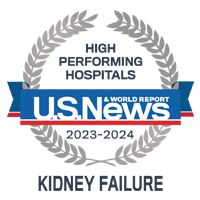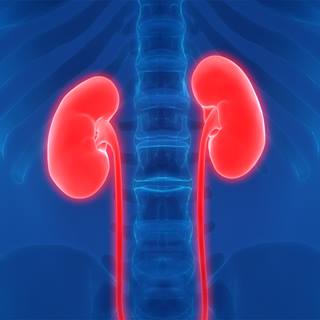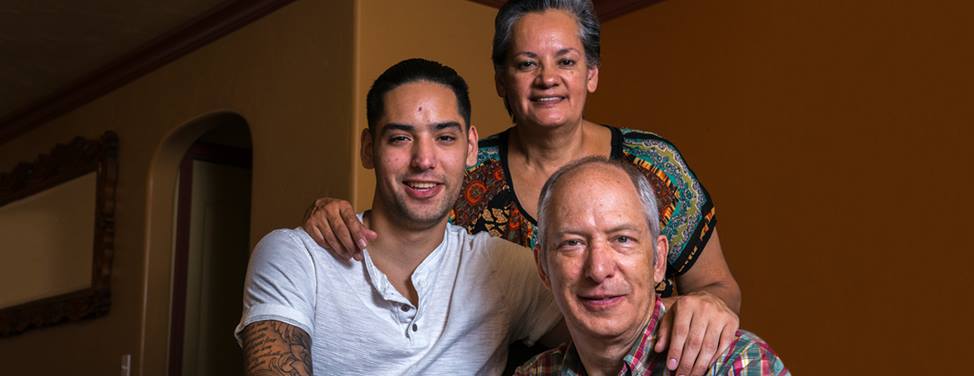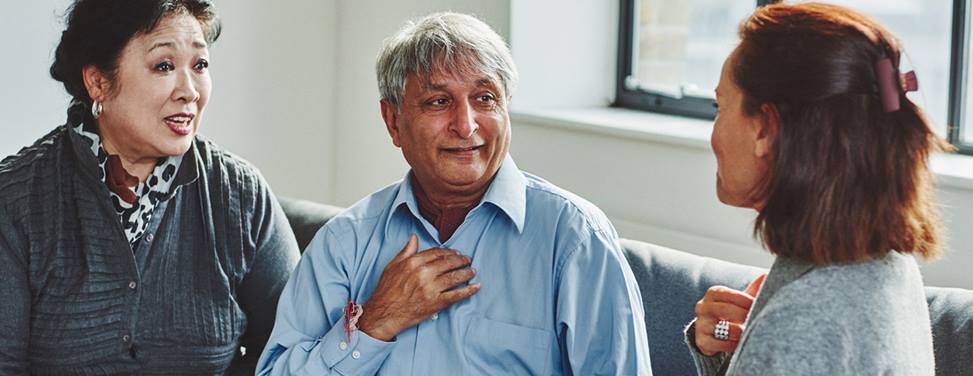Polycystic Kidney Disease, Autosomal Dominant

Overview
Autosomal dominant PKD causes fluid-filled cysts to grow in the kidneys. Cysts may also form in other organs, including the liver and pancreas. For many patients, so many cysts develop that they eventually cause kidney failure, making dialysis or a transplant necessary.
About 540,000 people in the U.S. have autosomal dominant PKD, making it the most common inherited kidney disorder.
Causes and Forms of Autosomal Dominant PKD
PKD is a genetic disease. "Autosomal dominant" means that if one parent has the disease-causing genetic variation, each child will have a 50 percent chance of getting the disease. If a child doesn't inherit the variation, he or she can't pass along disease risk to the next generation.
Ninety percent of PKD cases are autosomal dominant. In the rarer autosomal recessive version of PKD, the cysts start to form in infancy or even in the womb.
There are two forms of autosomal dominant PKD, each caused by an abnormality in a different gene: PKD1 or PKD2. The PKD1 form is more common, accounting for 85 percent of cases, and more severe. Symptoms usually start when patients are in their 30s and the disease often progresses more rapidly to kidney failure.
The milder form, PKD2 disease, usually manifests later in life, and is less likely to result in kidney failure except at much older ages.
Our Approach to Polycystic Kidney Disease, Autosomal Dominant
UCSF provides comprehensive care for patients with the autosomal dominant form of polycystic kidney disease (PKD). Our team includes specialists in nephrology, hepatology, cardiology, radiology, reproductive endocrinology and infertility, maternal-fetal medicine, nutrition and genetics. Because PKD can affect many organ systems in addition to the kidneys, we are experienced in navigating all PKD-related medical conditions and work together to provide you with the best possible care at every stage of the disease.
Our center is also a leading hub for research aimed at improving the lives of individuals with PKD. That means our patients have access to the latest diagnostic and therapeutic options, including advanced imaging technologies to monitor progression of the disease, as well as experimental treatments being evaluated in clinical trials.
Awards & recognition
-

Among the top hospitals in the nation
-

Rated high-performing hospital for acute kidney failure
Signs & symptoms
The most common warning signs of autosomal dominant PKD are pain in the side or back, and headaches. Some people also experience blood in the urine, frequent urinary tract infections, high blood pressure and kidney stones.
Most often, symptoms surface when patients are in their 30s or 40s, though occasionally they begin in childhood. Patients with a family history of PKD may be tested and diagnosed before experiencing any symptoms.
Serious complications of autosomal dominant PKD can include aneurysms (bulges in blood vessels in the brain), heart valve problems and diverticulosis (bulges in the wall of the colon). These complications are usually familial — in other words, your risk of aneurysm is higher if a family member with PKD has had an aneurysm.
Diagnosis
If PKD is suspected, doctors most often use ultrasound tests to diagnose it. Ultrasound passes sound waves through the body to create an image of the kidneys and is safe for all patients, including pregnant women. More powerful imaging tests, including computerized tomography (CT) and magnetic resonance imaging (MRI) scans, can also be helpful in certain settings.
In a person with a family history of autosomal dominant PKD, having at least two cysts in each kidney by age 30 confirms the diagnosis.
It's possible to develop the disease even if you don't know of anyone in your family who has had it. Because symptoms can take many years to appear, a family member could have had autosomal dominant PKD but died before being diagnosed. Occasionally the disease occurs because of a spontaneous genetic mutation, without any family history of the disease.
In families affected by PKD, relatives sometimes get a test to find out if they carry the disease-causing genetic variation. If you're considering such a test, it's a good idea to consult with a genetic counselor to help you sort through the pros and cons of undergoing testing.
Treatments
Unfortunately, there is no cure for autosomal dominant PKD. Once a diagnosis is made, your doctor will want to work with you to reduce pain and discomfort, minimize complications and keep your kidneys healthy for as long as possible. Here are some measures that may help.
Evaluating Headaches
See your doctor if you have severe or recurring headaches — especially if they feel different from other headaches you've had. They could be caused by an aneurysm in the brain, which could be extremely dangerous if it ruptures.
With small aneurysms, you can lessen the danger by keeping blood pressure and cholesterol under control, and by not smoking. If you have a larger aneurysm, your doctor may advise surgery to clip it.
Managing Pain
PKD-related pain can have many causes. Most commonly, the pain manifests as a dull ache in the back or sides; this type of pain is thought to be caused by the enlarged kidneys putting pressure on cyst walls or on other organs. Other causes may include infection of the cysts, bleeding into the cysts or kidney stones. You should see your doctor to determine what's causing your pain, because treatment needs to be tailored appropriately.
Pain from pressure on the cyst walls can be treated with over-the-counter painkillers. You'll need to get advice from your doctor about which type to take, though, as some can harm the kidneys.
Severe pain from cysts that have grown bigger can sometimes be treated with surgery to shrink the cysts, though it's not a permanent solution.
If your pain comes from an infected cyst, your doctor may want to treat the infection with an antibiotic.
Blood in the urine can signal bleeding into the cysts. Typically, doctors will advise bed rest and increased fluid intake for a few days. If the bleeding doesn't stop, a procedure may be required.
If your pain is from kidney stones, they can be treated in several ways, depending on their size, composition and location. One common treatment is lithotripsy, a noninvasive procedure that directs high-energy shock waves to break up the stones. The presence of many cysts, though, can make lithotripsy less effective. In some cases, a urologist may need to be consulted.
Controlling blood pressure
If you have PKD, you're at increased risk of high blood pressure — and it's important to keep your pressure within the normal range to avoid damaging your kidneys. You may be able to control your blood pressure with diet, exercise and other lifestyle modifications. If not, medications, including angiotensin-converting enzyme (ACE) inhibitors and angiotensin receptor blockers (ARBs), can help.
Treating Urinary Infections
If you get a urinary infection, let your doctor know right away. You'll want to be treated promptly with antibiotics so the infection doesn't spread to the cysts in the kidneys. Infections in the cysts themselves are more difficult to treat.
Dialysis and Transplant
When PKD progresses to kidney failure, waste products and fluid begin to build up in the blood. Initial symptoms may include nausea, loss of appetite, fatigue, and vomiting. At this point, either dialysis or a transplant is necessary.
A transplant often offers a better prognosis, but a shortage of organs means that even patients who desire a transplant are likely to rely on dialysis first.
There are two types of dialysis: hemodialysis and peritoneal dialysis. In hemodialysis, the blood is circulated and cleaned through an external filter, then recirculated back into the body. It's usually done at a dialysis center, several times per week for several hours, but can be done at home in some scenarios. Peritoneal dialysis can be done at home, and can be a better choice for people who are able to continue working.
For transplants, kidneys from living donors usually work best. A donor need not be a relative. Younger people with few other health problems are the best candidates for transplant. Your doctor can help you choose the best course of action for you.
UCSF Health medical specialists have reviewed this information. It is for educational purposes only and is not intended to replace the advice of your doctor or other health care provider. We encourage you to discuss any questions or concerns you may have with your provider.













